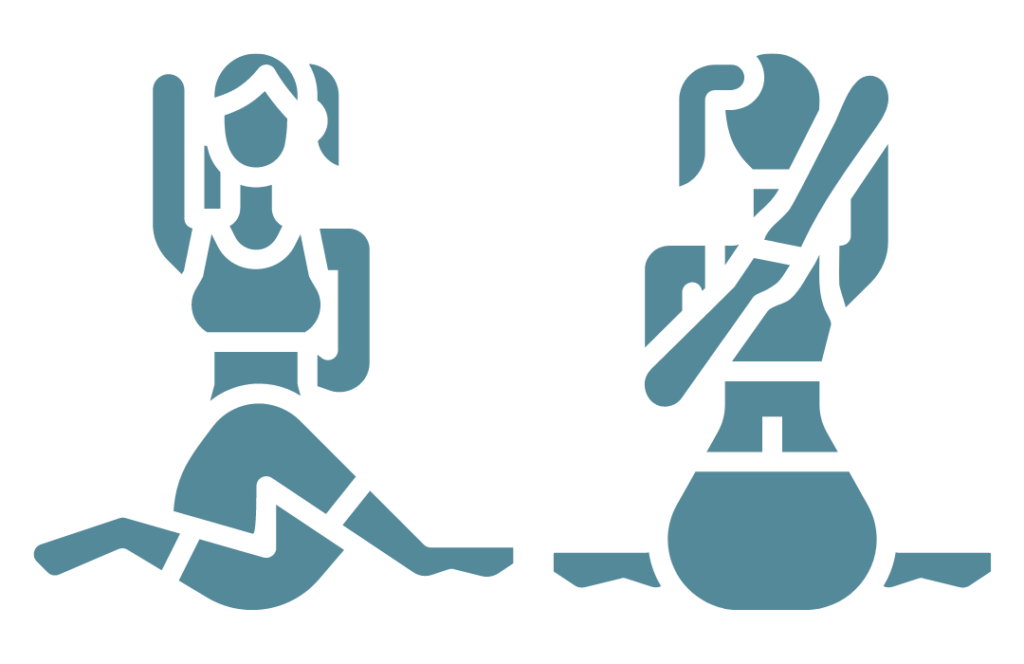In the Hatha Yoga tradition, this pose is named Gomukhasana which translates to cow face pose.
Many yoga postures are named from nature. When viewed from the front, the knees resemble the snout and the arms resemble the ears.

Hatha Yoga – Gomukhasana
In the YIN Practice, the pose is named Shoelace as the legs resemble the crossing over of shoelaces.
This pose opens the hips and helps decompress the lower spine. Adding RAVI to the pose helps with traction and grounding.
Begin Seated with legs crossing – working towards lining up knees with one on top of the other at center and heels pulled in towards opposite outer hip. We will focus on the legs and hips for the RAVI placement.
Top Leg Anchor:
Laying a RAVI in a Long Tube Fold on the top leg allows you to release the muscles that normally help you maintain this shape. When you use muscle to hold this shape you effectively hold the body back from experiencing a deep stretch.
Shoulder Anchor:
Here you also see the RAVI in a Long-Tube-Fold over the shoulder. This placement draws awareness to posture – your body will automatically sit up straight and you will also notice the grounding of the sit bone. The shoulder anchor can be placed on either side, however we recommend placement on the same side as the top knee. Ie: left knee on top – left shoulder anchored.
Long Leg Variation:
For tight hips you can lengthen out the bottom leg straight. This variation allows you to focus on one hip at a time
Folding the RAVI and molding it to the shoulder will keep the RAVI in place. If you feel like it is going to slide off, make the fold slimmer with a tri-fold and place closer to the side of the neck
Reclined Gomukhasana:
Reclined with hand|foot bind and RAVI:
This variation adds in a restorative influence.
To get into the pose
- Start reclined on the back.
- Double RAVI – Place 1 RAVI (long-tube-fold) on each shin
- Single RAVI – place 1 RAVI (long-tube-fold) over 1 shin
Cross the heavy leg over the top of the lighter leg so the RAVI is on the same leg as the knee closest to your chest. - Cross at the thighs – not the shins. This will move the knees towards aligning in the center.
- Reach for the top of the ankle with the hands and pull the heels toward the outer edges of the hips. The RAVI should slide down over the hand|foot bind.
- It is common to take some fidgeting to get a comfortable grip on the bind and you may need to lift the head and shoulders to reach for the bind.
Automatic savings when you order in bundles + shipping is always free.
 We make each and every RAVI in South Carolina. The textiles are also printed in the upstate! Support American Families with your RAVI purchases.
We make each and every RAVI in South Carolina. The textiles are also printed in the upstate! Support American Families with your RAVI purchases.








